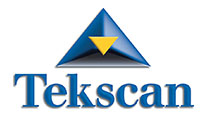“User friendly” is a technological buzzword to which many companies lay claim, but don’t always deliver on with their products. A year ago, Tekscan, the Boston-based developer of tactile pressure measurement systems and software, made it a goal to meet that criterion for lower extremity professionals in the clinic.
With that objective in mind, 2014 saw the company refine the automated reporting system that is a key feature of F-Scan 7.0, the software for the F-Scan In-Shoe Analysis System.
The upgrades to the software allow the practitioner to see data, such as force versus time curves in real time, and then print out the results in an easy-to-read Microsoft Word document format. These automated reports are the reason for software’s high level of usability, explained Peter Gantchev, Tekscan’s medical product manager.
“The auto reports have been a game changer for us,” Gantchev said. “We have something unique in terms of the gait curves and the bar charts that the F-Scan produces so the patient can really see what the issues are with their gait. That’s real-time data that the clinician can use to get their patients on board with the prescribed treatment protocol. Patients are getting much more involved in their care; they want to know why a certain treatment decision was made and what the benefits are.”
The data generated for the report are protocol driven, offering documentation of the F-Scan results that help practitioners embrace the evidence-based medicine that’s emphasized in the post-Affordable Care Act world.
“We are using industry-standard protocols—it’s not just proprietary protocols that we developed—to generate these very focused reports. The information in the report matches what clinicians need and expect,” Gantchev said.
George Trachtenberg, DPM, can attest to the value of the F-Scan. Based in Vestal, NY, the nearly 40-year veteran podiatrist has been a Tekscan customer for two decades, and now serves as an unpaid consultant and compensated educator for the company.
Trachtenberg said that, over time, he has seen the F-Scan evolve into a product that is easier to use “out of the box,” but that the changes haven’t meant skimping on useful clinical information. Prior to the F-Scan, he said, practitioners lacked the right tools to assess gait and gait cycle. “With F-Scan mapping, we’re able to directly see what is happening with the patient’s gait and we can design orthoses or offer other nonsurgical solutions.”
Trachtenberg said he highly recommends that newer practitioners take the time to go through the automated reports with their patients.
“Initially, I used the F-Scan results to recruit my patients into a different [nonsurgical] model of care,” he said. “It gives new practitioners something impressive to give the patient. It’s a source of information that is simple enough for the patient to understand, but still give practitioners the functional, reproducible data they aren’t going to get with a clinical exam alone.”
Tekscan plans to build on the F-Scan’s success by offering a customization feature. This will allow practitioners to decide which elements they would like the printed report to display. For instance, another new feature of the F-Scan software is a center of force (CoF) velocity calculation that provides anterior to posterior CoF velocity, among other measurements.
But that information may be more technical than a practitioner wants to share with a patient. “With customization, it allows the user to display a limited number of parameters…they can pick and choose what information they believe will benefit the patient the most,” Gantchev said.
This year, the company launched FootMat 7.0 software that pairs with its various mat platforms, such as MobileMat. Once again, the software’s long suit is that it saves users time on data analysis and report writing. The Automated 3-Box Analysis segments the foot into three key regions—the heel, metatarsal, and total foot—producing a more complete biomechanical foot function analysis.
Finally, 2014 saw the new and improved version of the Sports AT Software for use with MobileMat. This concussion assessment software is currently geared to athletic trainers and sports team physicians, but Gantchev said results from the Sway Analysis Protocols that the FootMat software uses could be of value to nonsports practitioners.
One application of Sway Analysis testing with the MobileMat could be for fall risk assessment in older adults. Tekscan has an eye on developing a balance test protocol targeted to physical therapists who work with elderly patients on stability issues, Gantchev said.
Another growth area is balance testing in patients with progressive diseases of the nervous system (Parkinson disease, for example), cognitive disorders, or even cancer patients experiencing functional mobility problems because of chemotherapy, according to Gantchev.
“Anything that compromises the immune system can compromise the balance system so there’s a lot of opportunities for us to bring our products to those physicians,” he explained.
Shalmali Pal is a freelance medical editor and writer in Tucson, AZ.
Article sponsored by Tekscan.









